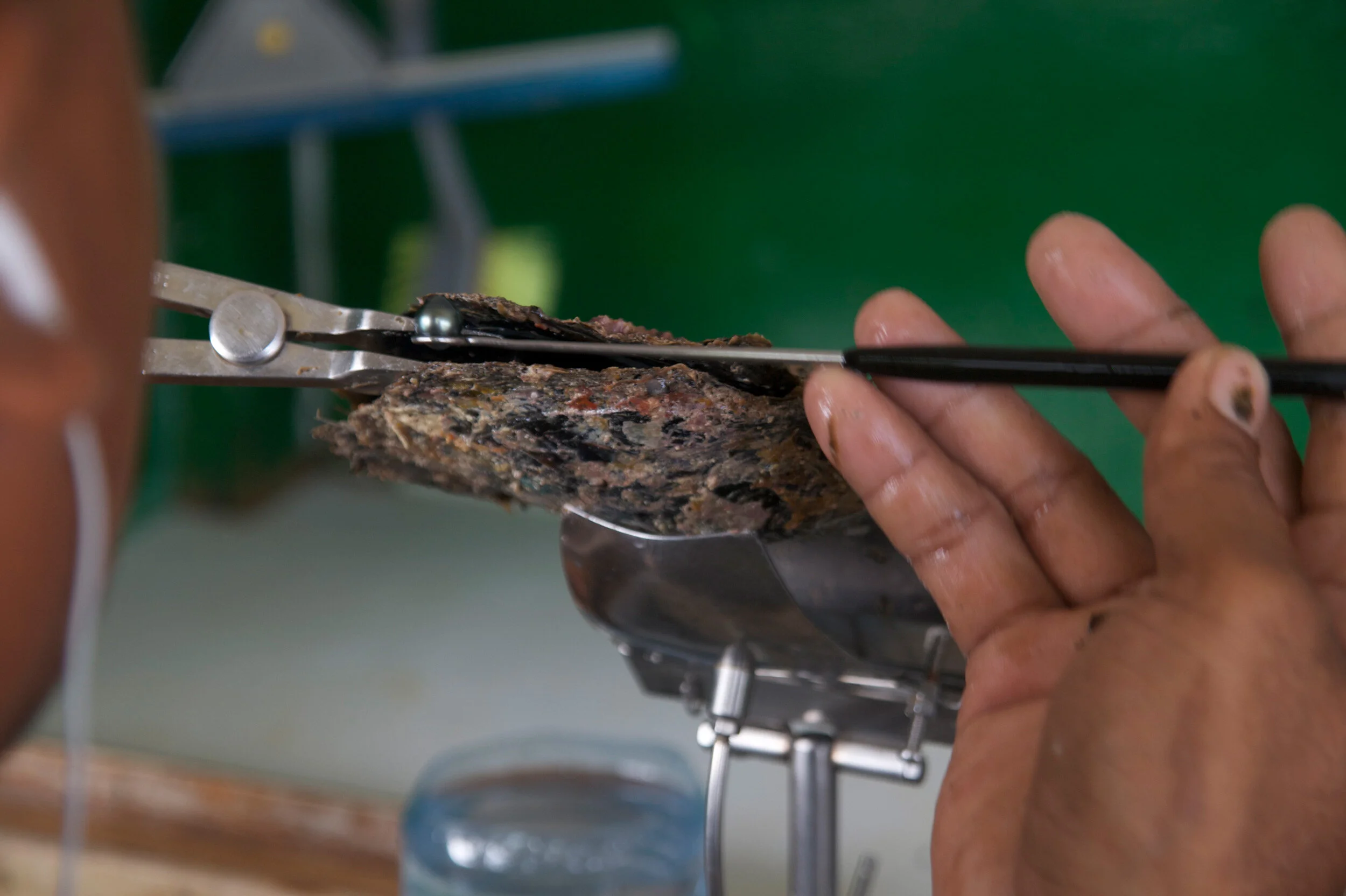Pearl Bones
15 December 2009 – 16 January 2010
Bloomberg Space, London

Fingertip bones
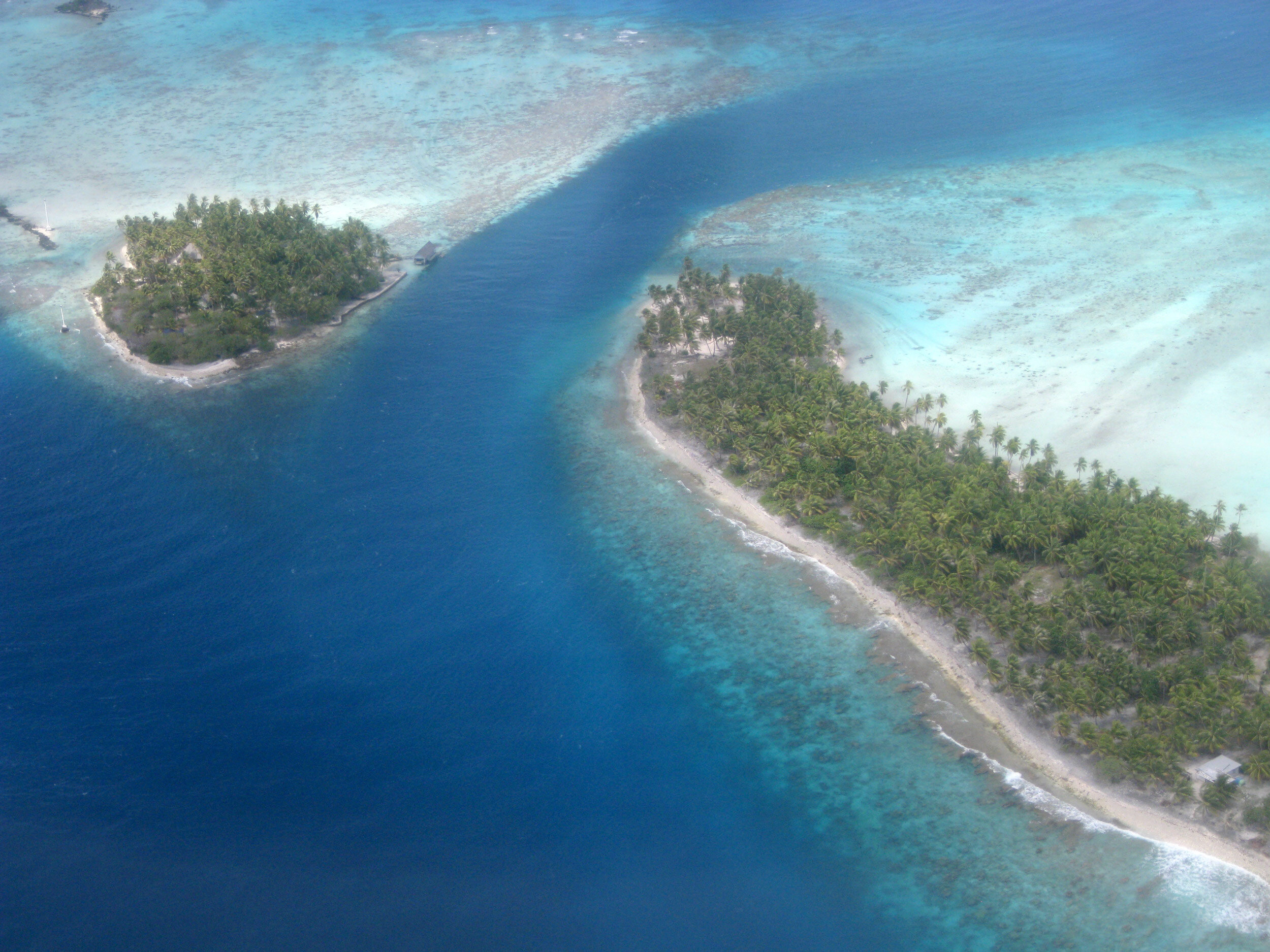
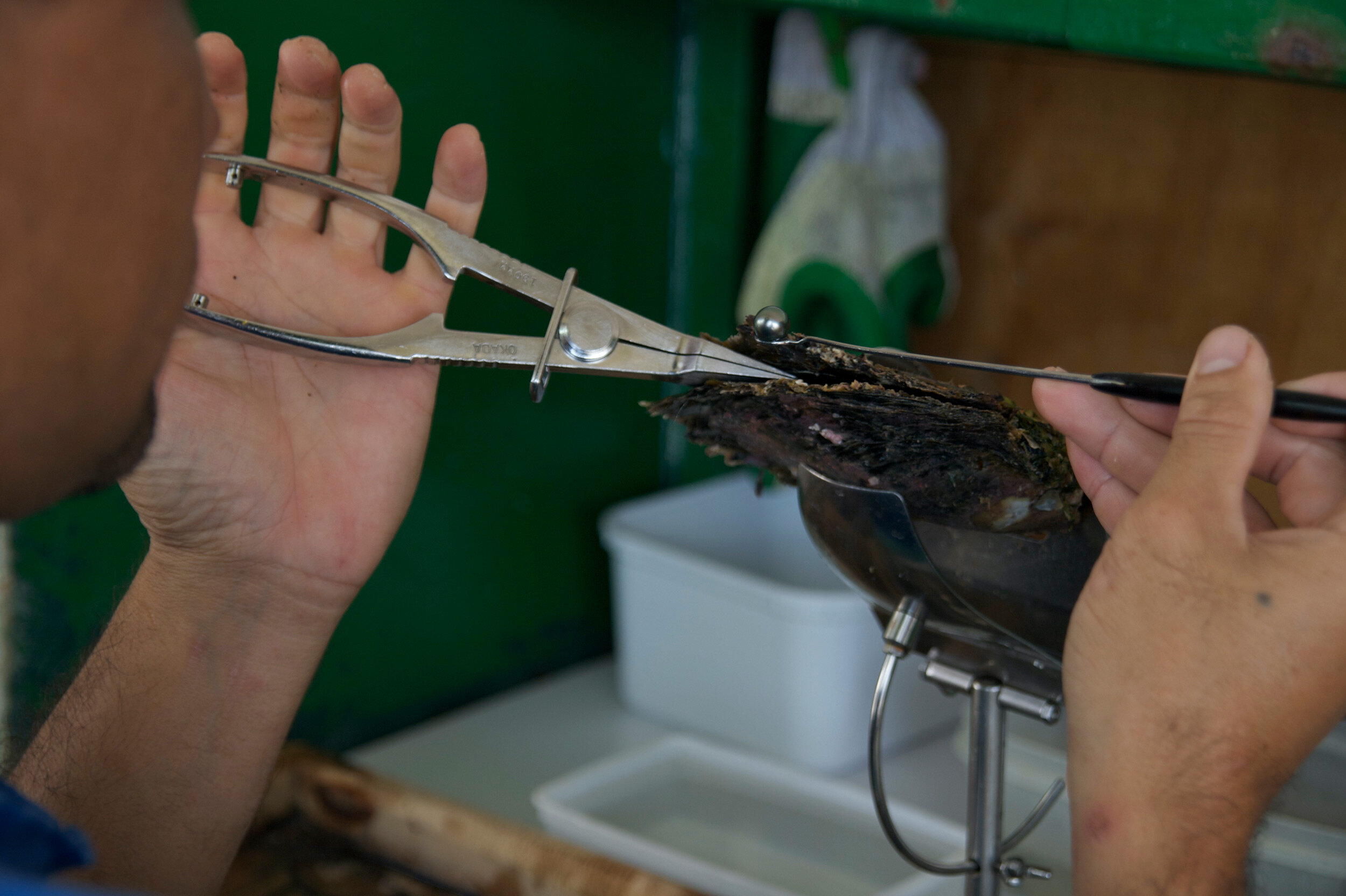
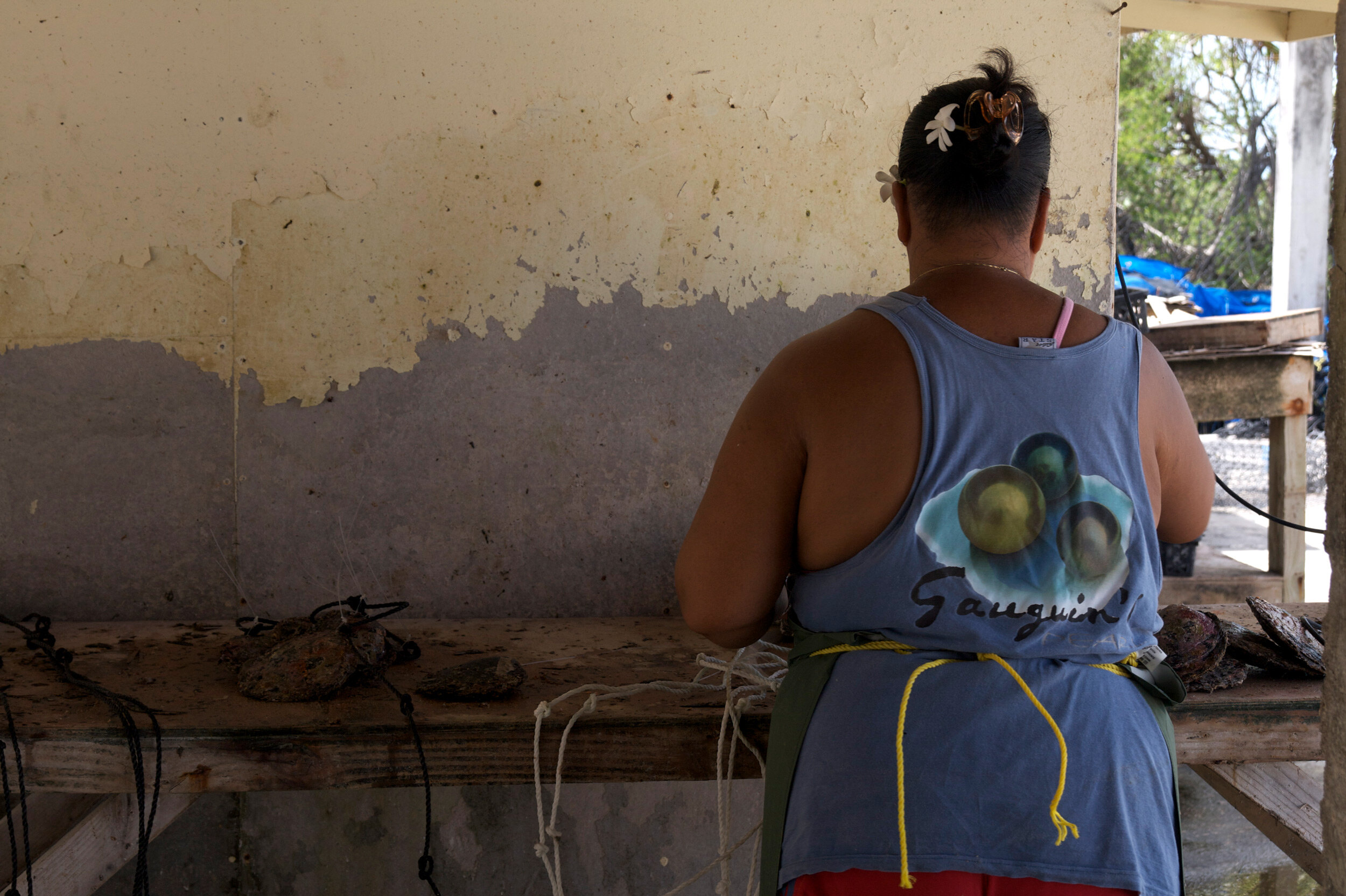
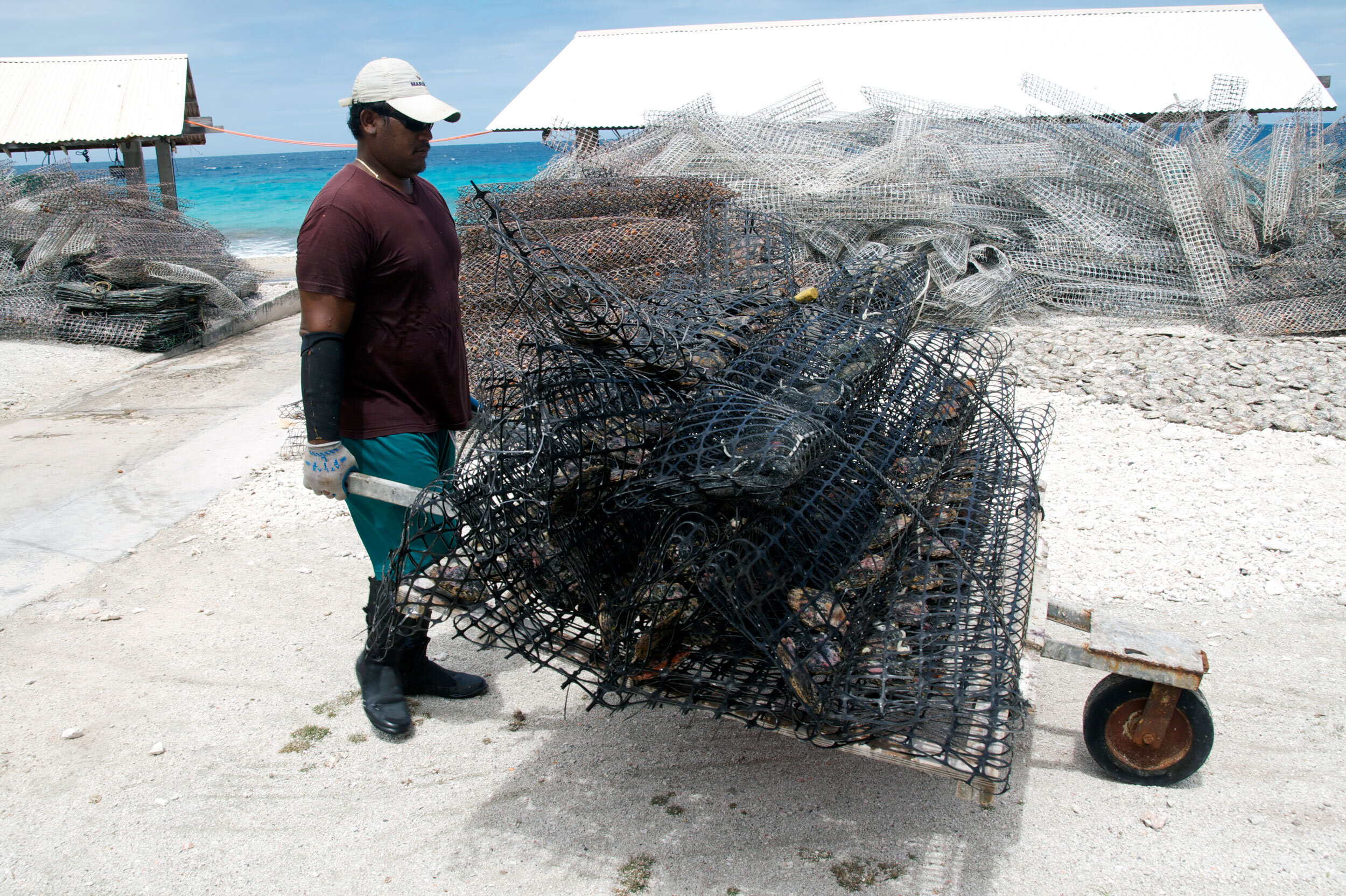
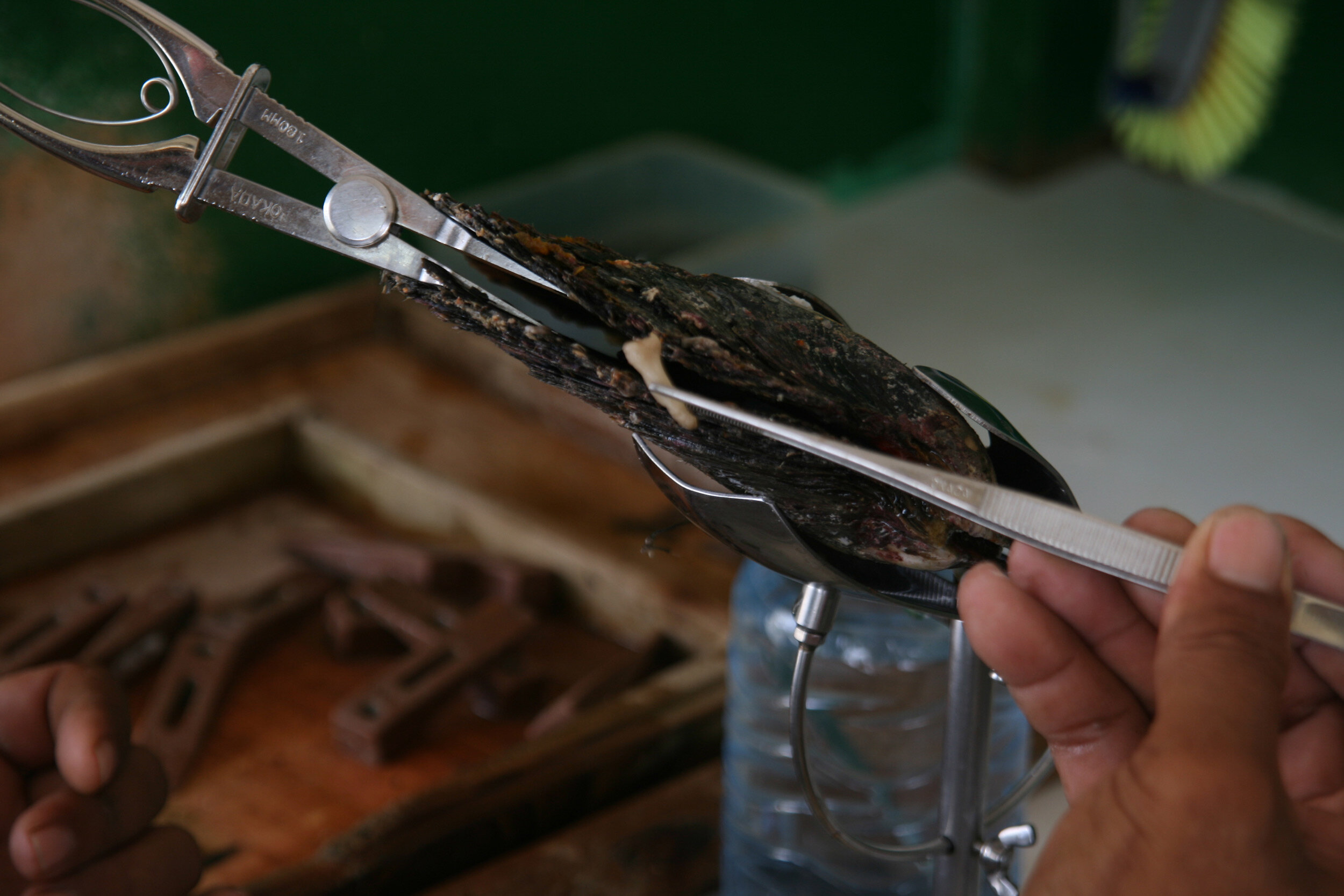


Relic, 2009, Porbeagle Shark, 21 carat gold leaf
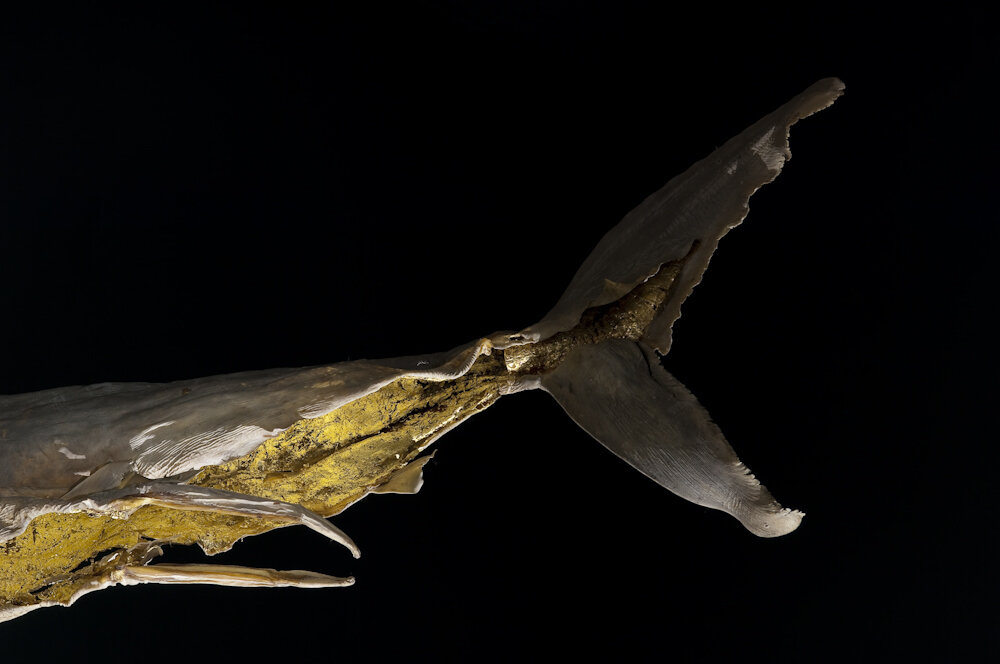
Relic (Detail), 2009
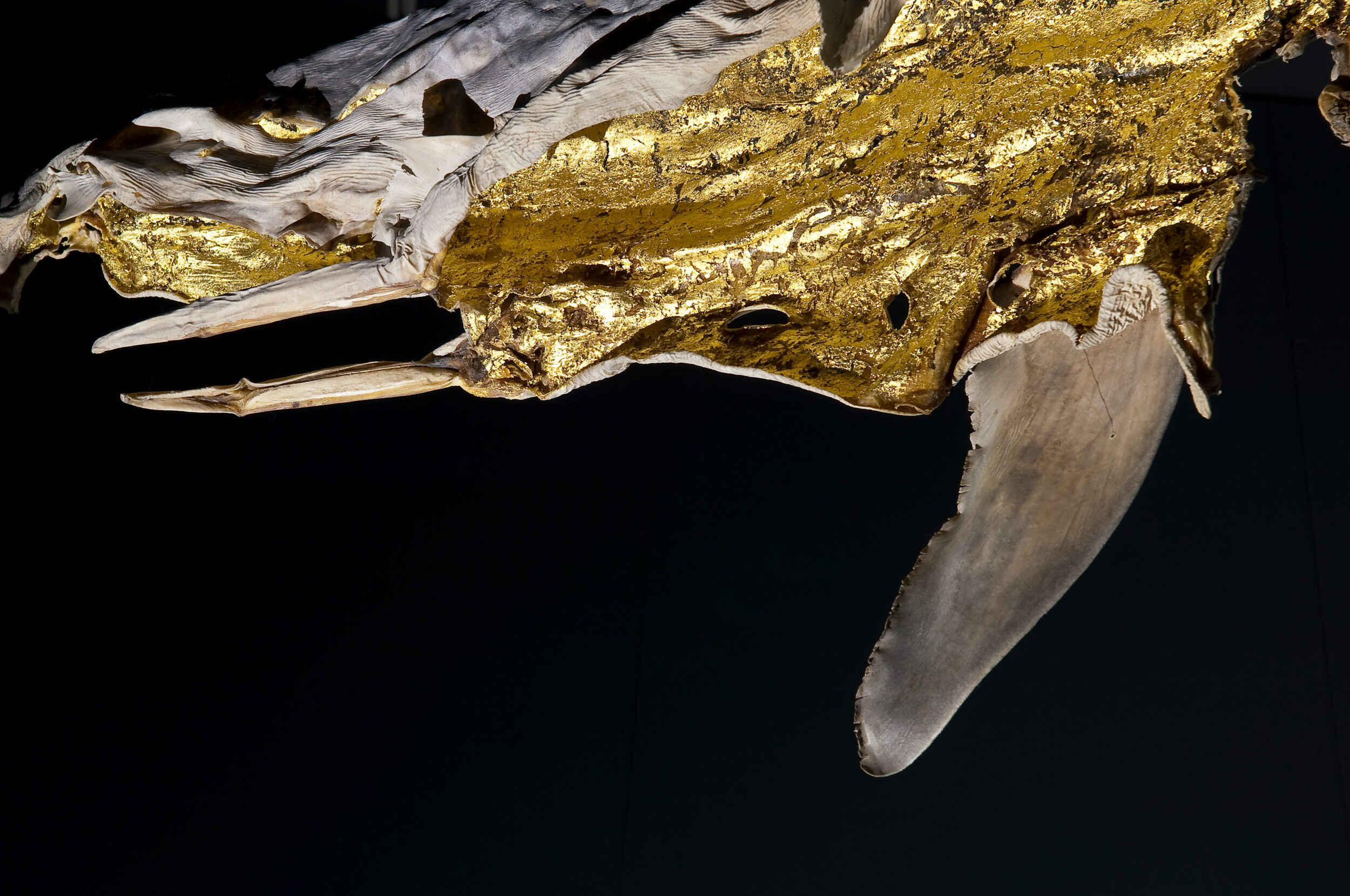
Relic (Detail), 2009
Pearl Bones, Video, 11 min 42 secs
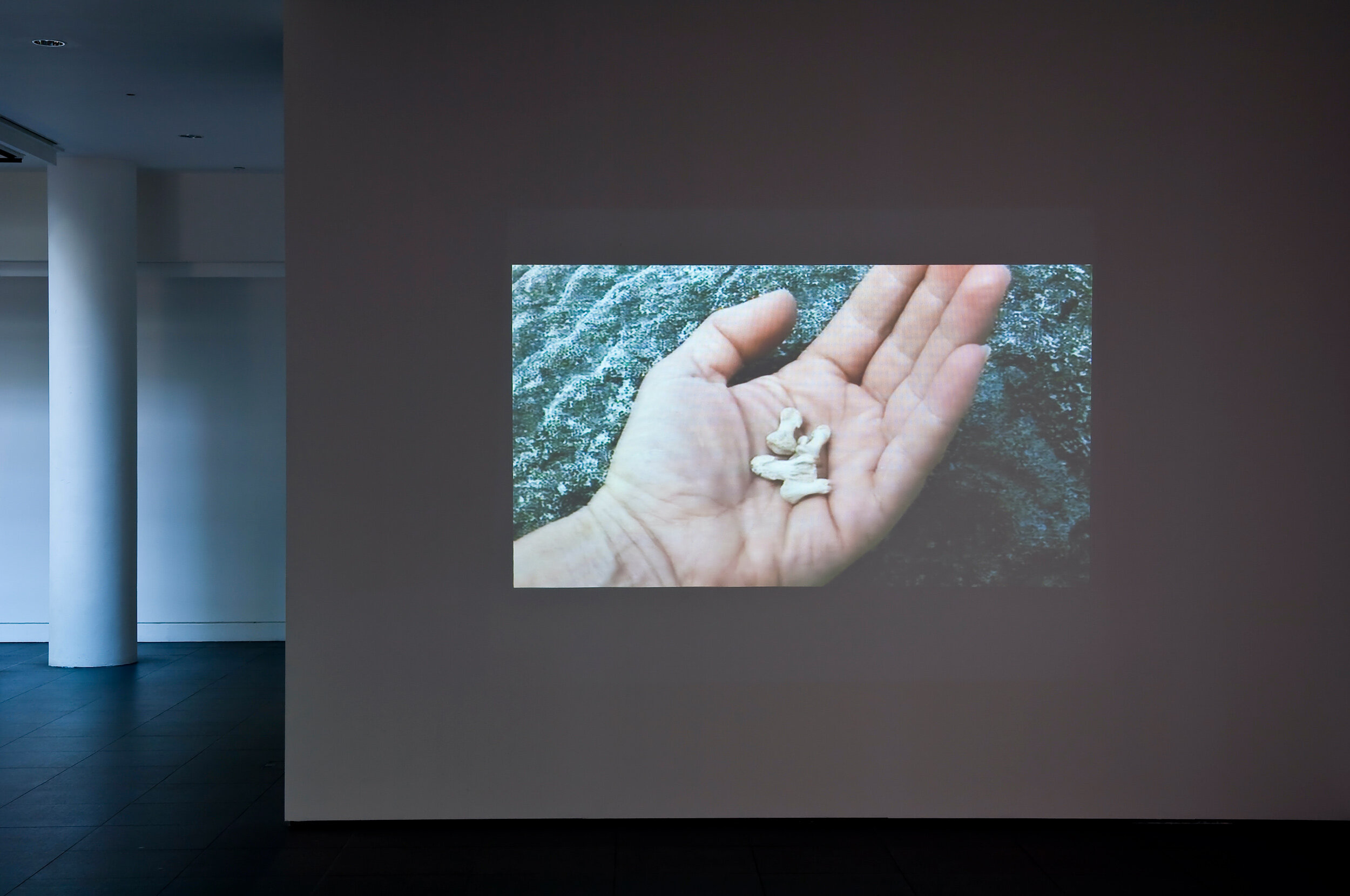
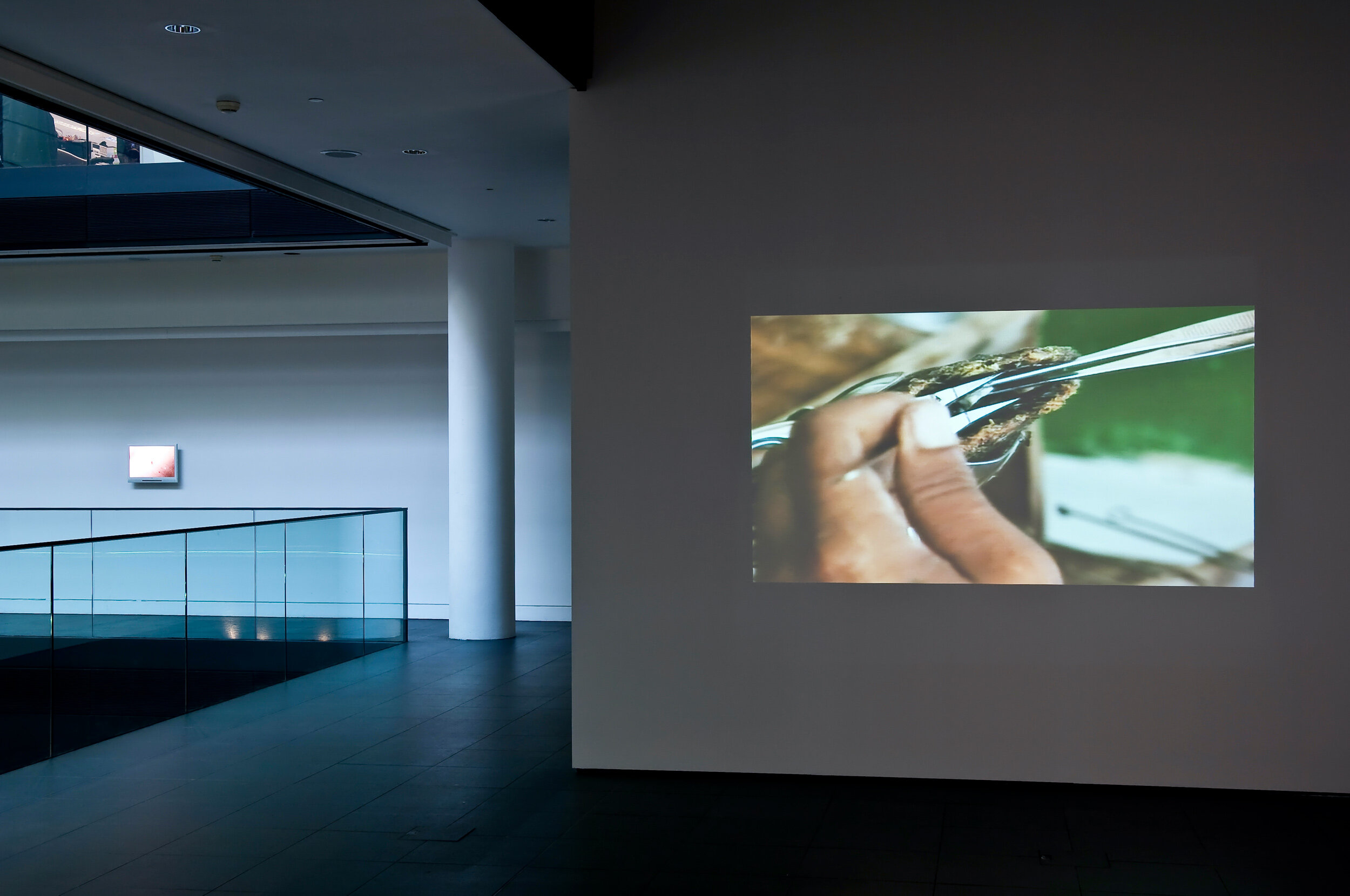
The Bloomberg exhibition space in London is surrounded by glass-walled offices where financiers deal with currency value and market flux. Pearl Bones was a work made for the Comma series.
In the 15th Century the pearl was the most valuable item on the planet.
Pearl Bones involved travelling to Tahiti to a pearl farm, carrying five finger-tip bones from a human hand. The plan was to insert the bones into five black-lipped oysters to see if the animals would create pearls around them. Cultured pearls are created by introducing small beads into oysters. The animals then secrete nacre which covers the introduced irritant and creates a skin of pearl.
Pearl Bones shows the workers extracting pearls and inserting the fingertip bones into the shells. The oysters were then attached to racks and hung out in the lagoon for several months. The video was screened for the show not knowing whether the experiment would succeed. (See later Frith Street Gallery Stalactite 2011)
The other works in the show were also about value and the natural world.
Relic: the skin of a shark hung suspended in a darkened space; the inside of the skin was lined with 18ct gold leaf. Several small videos: a shark fin hanging from a string moving gently in the wind as if still swimming filmed on the atoll of Rangiroa, a colony of hermit crabs scrabbling out of a pair of hands and a vertebra of a whale bone rocking slowly then vibrating to infinity.
List of works (click to expand)
Pearl Bones, Video projection, 11 min 42 secs
Relic, 2009, Porbeagle Shark, 21 carat gold leaf, 60 cm x 70 cm x 182 cm
Mobile, 2009, Video, Approx. 3 mins
Ossicle, 2009, Video, 53 secs
Hermits, 2009, Video, Approx. 2 mins


